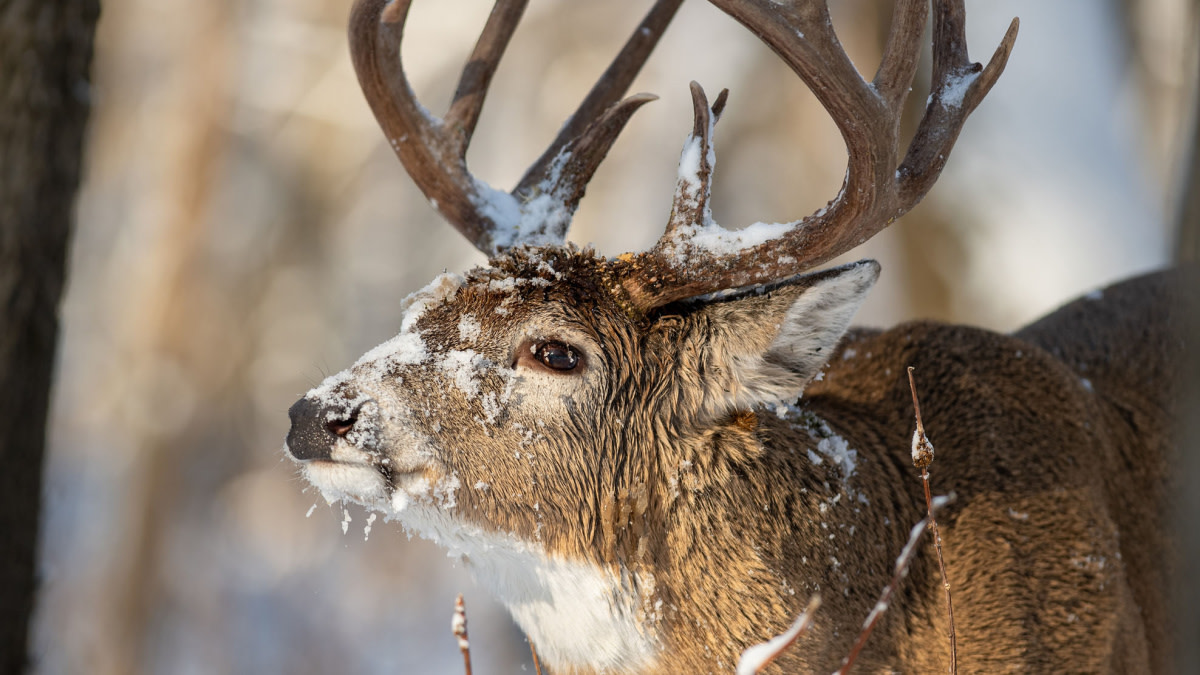
If you want one of the biggest challenges in whitetail hunting, set your sights on a mature buck in December. If that’s not enough, commit to doing it on public land. After general gun season resets the deer herd to survival mode and the rut winds down to nothing, it becomes challenging just to see a buck, let alone kill one.
You’ll also have to ditch most of the traditional advice on how to get it done in December. Slipping in to sit evenings over a sweet food plot or picked cornfield probably won’t be an option. And if those do exist on your public land, you can rest assured that you won’t be the only two-legged predator there.
You’ll need to start from scratch.
Fresh Intel
Missouri’s Zach Fleer kills a ton of big bucks on public land in his home state. During the years when he still has a buck tag left after rifle season, he says that there is one key to finding good bucks.
“Rifle season hunting pressure always shifts the deer travel routes, so I head out and start looking around for sign,” Fleer said. “I go right back to my early-season strategy of keying on certain types of food, but finding the best sources right now always involves speed scouting through the cover.”
Fleer’s goal is to find setups between bedding and food sources that are being used right now. This often involves whatever is left below the oak trees, or some other source of recovery calories that not every hunter will find and key on. That means you need to avoid those meadows and food plots. Even when those are available, the bucks that might wander into an ag field will likely find some way to stay in cover until shooting light ends, which is where Fleer tries to intercept them on public land.
This is why scouting is key—but you’re not looking for fresh rubs or scrapes (although you should definitely take note if you find either). Instead, this is all about trails, tracks, and beds.
Bedding Realities
I’m not a bed hunter for most of the season. It’s not my style. I’m far more comfortable hunting travel routes and staging areas, but I do shift focus to beds late season. This is because finding buck bedding is easier now than any other time of year.
This late-season silver lining is that good cover—the kind that a mature buck will hole up in—is never more limited during the season than it is right now. This simply reduces the possible spots a buck will bed in, making your job of finding these areas easier. To identify them, lace up your boots and heed Fleer’s speed scouting advice.
In many places, you’ll probably want brush pants and eye protection, because the bucks you’re targeting are likely to use the gnarliest patches of cover available. I see this every December while pheasant hunting with my Lab, and am consistently amazed at the quality of bucks we jump that either wait until we are right on top of the, or have worked past them totally unaware of their presence.
In some cattail sloughs or patches of CRP, we might jump two or three good bucks, all on public land and bedded in cover that is visible from a road. The lesson there is that the deer are so much better at hiding and avoiding our detection than we are at finding them. They’re confident that they’re safe in these areas, and they’re often right.
Intolerable Mistakes
I’m not one of those whitetail hunters who believes deer develop extra senses and are nearly mythical in their ability to survive. I do, however, subscribe to the belief that late-season deer on pressured ground will not tolerate a whole lot of sloppiness.
If you aren’t minding your access and wind directions, you’re out of luck. If you’re gun hunting, this is much easier to address given the range of your weapon, but bowhunters need a perfect plan.
For me, that means setting up for shots that aren’t point-blank. I don’t want to draw on a deer when he’s 10 yards away and the snowy woods are pin-drop quiet. I’d prefer that he walks by at 25 or 30 yards. I also tend to plan my draw for when the deer is exactly where I want to shoot him so that if I do get busted, I settle a little low and fire away.
If you draw while he’s walking in and he suspects something’s up, you’re in trouble. I’d much rather have him in my shooting lane and angled the way I want him if he’s going to spook. This might seem like overkill, but one thing I know about December whitetails is they are on their A-game when it comes to detecting hunters in a tree.
And like any part of the season, it’s better to hunt on weekdays than weekends. With shooting light ending at 5:00 each day, there aren’t a lot of whitetailers hitting the woods for an after-work hunt. This can often result in heavily-hunted public parcels that are void of humans Monday through Friday.
December Struggles
The biggest challenge in deer hunting is tagging a decent public land buck late season, but it can be done. You just have to forget all of the earlier deer work you did and focus on identifying up-to-the-minute bedding areas and travel routes. After that, it’s a matter of setting up for a low-light encounter on a cagey survivor and making it to full draw.
Feature image via Matt Hansen.






Conversation